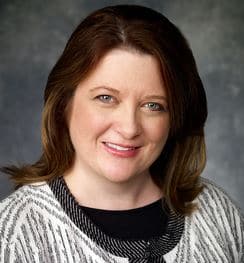DALLAS, TEXAS — According to a recently published study, no relationship has been found between common recreational noise exposure and so-called “hidden hearing loss”. The study, conducted by researchers at the University of Texas (UT) Dallas, was published last month in Frontiers in Neuroscience.
Previously, researchers have proposed that recreational noise exposure may result in damage between the sensory hair cells in the inner ear and their auditory nerve targets that send information to the brain (synaptopathy). Because the damage is challenging to detect using conventional hearing test methods, this type of auditory deficit has been referred to as “hidden hearing loss”.
Hidden Hearing Loss and Noise Exposure
A total of 32 participants with normal hearing (25dB HL or better, from 250-8000 Hz) attended a “loud” event of their choosing, including concerts, clubs and music festivals. They then recorded the amount of time that was spent at the event and how loud it was.
A baseline, as well as a pre- and post-exposure audiological evaluation measured changes in the participants’ hearing and speech abilities.
Participant pre- and post-exposure evaluations included: otoscopy, tympanometry, distortion product otoacoustic emissions (DPOAEs) (f2 frequencies 1–8 kHz), pure-tone audiometry (0.25–8 kHz), Words-in-Noise (WIN) test, and electrocochleography (eCochG) measurements at 70, 80, and 90-dB nHL (click and 2–4 kHz tone-bursts).
Colleen Le Prell, PhD
“One of the surprising findings from this study was that even the subjects who had extreme exposure — two subjects who went to a music festival with 16 hours of exposure at 101 to 103 dBA (A-weighted decibels), which is around 1,000 percent of the daily occupational noise limit — had only temporary changes on some functional tests, with no evidence of permanent pathology,” –Colleen Le Prell, PhD, study co-author
The day after an exposure, there was a statistically significant correlation between the noise dose and WIN performance overall, and within the 4-dB signal-to-babble ratio. However, there were no statistically significant correlations between noise dose and changes in threshold, DPOAE amplitude, or AP amplitude the day after a new noise exposure.
Hidden Hearing Loss: Is Noise a Risk Factor?
“In an initial retrospective analysis, we found no relationships between these participants’ recreational noise exposure histories and their current auditory function,” said Dr. Le Prell.
“While there is concern about music players and other loud recreational sound exposure ‘damaging the ears of an entire generation,’ in these participants, increasing use of music players and periodic attendance at concerts or clubs did not appear to cause the lasting damage everyone is concerned about.”
Researchers warned that although the current study did not link recreational noise exposure to injury, those with more noise exposure could be at risk for permanent damage.
Source: UT Dallas









This study only involved 32 patients and while it may be valid, and while the authors do warn against unprotected loud noise exposure, I think it is irresponsible to say, “increasing use of music players and periodic attendance at concerts or clubs did not appear to cause the lasting damage everyone is concerned about”. Everyone is concerned about this for a reason – years and years of studies and results showing that loud noise exposure is a problem and that hearing loss can occur from just one exposure. Personally, I would like to see more studies with more participants before we make a statement that may not have been meant to be global and/or conclusive, but can be taken as such.